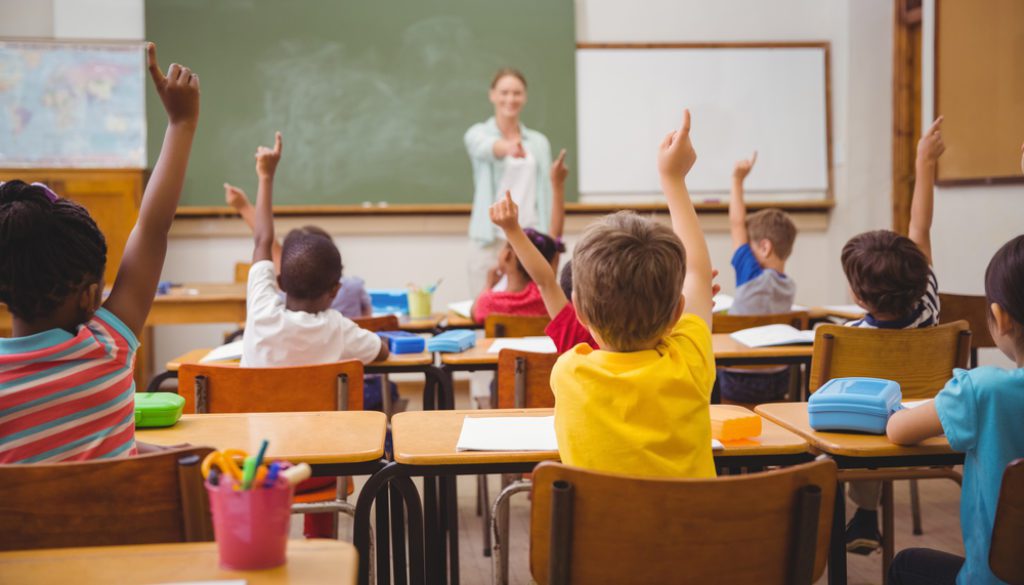La sécurité à l’école en 2022
Students, teachers, principals, superintendents, school resource officers (SROs) and other staff are once again navigating classrooms and hallways to cafeterias, athletic fields and other common areas on school campuses.
For many school leaders, their safety and security plans continue to evolve. These plans will include evaluating and revisiting existing safety measures for everyday matters, medical emergencies and other adverse events. Superintendents, principals, SROs, teachers and others will also have the added complexity of how COVID-19 will continue to impact the education, health and wellness of their school community.
Three Areas of School Safety Concern
Over 56 million children are now in public and private schools. The health and wellness concerns for some of these students are complex and involve continuous care. Other students receive mental health and emotional support services only at their elementary, middle or high schools. School leaders are also preparing for and reacting to adverse events like the increase of school shooting threats and crime.
Here are three safety concerns that impact K-12 schools across the U.S.
Student Mental Health
- 61% of teens say they feel pressure to get good grades.
- 50% of all lifetime mental illnesses develop by age 14.
- Over 2.3 million youth (ages 12–17) cope with severe major depression.
- 8 in 10 children ages 3–17 with depression receive treatment.
- 1 in 5 students ages 12–18 are bullied during the school year.
Experts are still unsure of the long-range impact of the COVID-19 pandemic on children and adolescents, though there already are indications. For example, emergency department visits for suspected suicide attempts were 51% higher for girls ages 12 to 17 in 2021, compared to the same period in 2019. Three leading pediatric health organizations declared the mental health of children and adolescents a national emergency.
The challenges of the pandemic and learning are affecting parents, children and adolescents, according to a recent survey by the Kaiser Family Foundation (KFF), a nonprofit organization focusing on national health issues.
- 4 in 10 parents of school-aged children (ages 5–17) said at least one of their children fell behind academically.
- 36% of parents said at least one of their children fell behind in social and emotional development.
- 42% of parents said their children experienced a new mental health symptom that didn’t have before the pandemic, including:
- Difficulties concentrating on schoolwork (27%)
- Nervousness or easily being scared (19%)
- Sleeping problems (18%)
- Poor appetite or overeating (15%)
- Frequent headaches or stomachaches (11%)
School Violence and Prevention
- 151 school shooting threats were made in September 2021, up from a three-year average of 29 for one month.
- 97 gun-related incidents occurred in schools from August–October 2021, compared to 29 during the same period in 2019.
- 80% of public schools recently recorded one or more incidents of violence, theft or other crimes.
- 96% of public schools at conduct lockdown procedures.
- 95% of schools hold active shooter drills.
Medical Emergencies
- 10 million–20 million children and adolescents in the U.S. have some form of chronic illness or disability that may last from three months to a lifetime.
- There are currently over 5.1 million children under the age of 18 with asthma.
- 1 in 13 children have food allergies.
- Over 3.5 million children ages 14 and younger get hurt annually playing sports or participating in recreational activities. The most common injuries are sprains and strains.
- About 6.1 million children between ages 2–17 are diagnosed with ADHD.
Communication: The Key to School Safety
Staying informed and updated is critical with teachers, students, SROs and others on campus. It will be important for key stakeholders to implement the tools, policies and procedures to ensure their entire campus community is safe and protected. These stakeholders will need to prepare for, manage and respond to any kind of emergency throughout their campus. They must also keep their staff in the know about everyday matters, such as training sessions and routine school safety drills.
The Rave critical communication and collaboration platform allows administrators, teachers, school resource officers and others to improve information flow, provide continuity of operations and expedite response efforts. Key stakeholders would be able to scale and adapt their use of the platform for daily matters, as well as unexpected adverse events. The platform includes:
- A one-click mobile panic button application instantly connects to 9-1-1 teams, first responders and necessary personnel simultaneously. The application provides 9-1-1 telecommunicators and first responders with critical response data. It also automatically triggers mass notifications, digital signage and more.
- Status checks enable administrators to collect real-time updates from staff members during an emergency. These updates help first responders and other personnel quickly identify where resources are needed most.
- Two-way texting allows staff members or students to report suspicious activity or other issues discreetly. A student, for example, can report anonymously if they’re being threatened by a classmate. Administrators can communicate with the student and track the information.
- Recurring and automated health checks send messages to parents to check in about their child’s health and wellness status.
- Secure document delivery automatically enables school leaders to communicate and/or send documents (e.g., progress reports) securely to student families, streamlining the process for staff and strengthening engagement with students and families.
- Customized content directory hosts important information and documents, such as CPR instructions, facility maps and active assailant procedures, in one location so staff will be able to immediately respond.
- Drill management ensures key stakeholders can track drill compliance for each school or at the district level. They can generate reports for drills, including active assailant, emergency and fire, and have a record of the date, time, participants and the campus(es) involved. Stakeholders can also customize their drill forms to include start/end time, successful actions and lessons learned.





